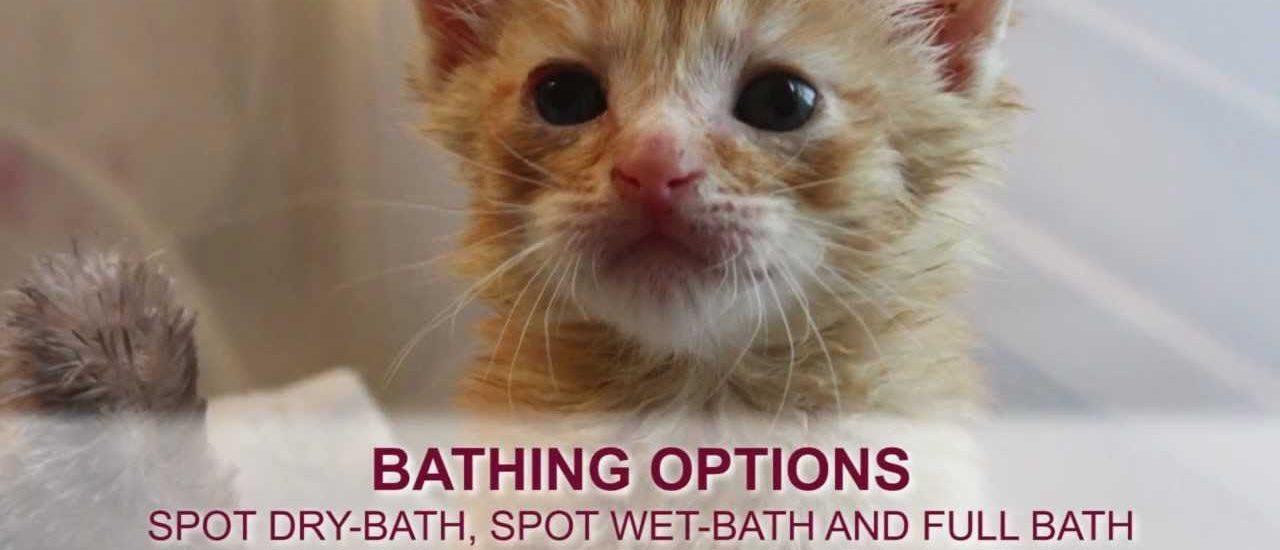You can bathe a kitten when they are dirty, but it’s important to approach it with care. The ideal age to introduce a kitten to bathing is around 8 to 12 weeks old. Younger than that, they may not be ready or may get too cold. Always use lukewarm water and special kitten shampoo to avoid skin irritations. Keep the experience positive and short to prevent stress. Ensuring the proper conditions and approach will help make bath time a pleasant experience for both you and your furry friend.
When Can You Bathe a Kitten: A Comprehensive Guide
Introduction
Are you a new kitten owner wondering when it’s safe to give your furry friend a bath? Bath time can be a source of stress and anxiety for both kittens and their owners, but with the right approach, it can become a bonding experience that helps keep your kitten clean and healthy. In this guide, we’ll explore the important factors to consider when deciding when to bathe your kitten and provide you with tips on how to make bath time a positive experience for your feline companion.
Understanding Your Kitten’s Needs
Before jumping into the bathing process, it’s crucial to understand your kitten’s needs and behavior. Kittens are naturally clean animals that groom themselves regularly using their tongues. However, there are instances when a bath becomes necessary, such as when they get into something sticky or dirty or if they have fleas or skin conditions. Understanding your kitten’s specific situation will help you determine the best time to bathe them.
When Should You Avoid Bathing a Kitten?
While baths are sometimes necessary, there are certain circumstances when you should avoid bathing your kitten. For example, kittens less than eight weeks old should generally not be bathed unless absolutely necessary. Young kittens have trouble regulating their body temperature and can easily become chilled if not dried properly after a bath. Additionally, kittens with health issues or a weak immune system may not be good candidates for bathing.
Signs That Your Kitten Needs a Bath
There are several signs that indicate your kitten may need a bath. These include visible dirt or debris on their fur, a sticky or oily coat, the presence of fleas or flea dirt, and skin irritation or matting. If you notice any of these signs, it’s time to consider giving your kitten a bath.
Choosing the Right Time and Place
Once you’ve determined that your kitten needs a bath, it’s important to choose the right time and place for the task. Select a time when your kitten is calm and relaxed, such as after a meal or playtime. Choose a warm room free from drafts and prepare all the necessary supplies, including kitten-safe shampoo, a towel, and a gentle brush.
Preparing Your Kitten
Before starting the bath, it’s essential to prepare your kitten for the experience. Brushing your kitten’s fur beforehand will help remove any tangles or matting and make the bathing process smoother. Trim your kitten’s claws to prevent scratching and place a cotton ball in each ear to prevent water from entering.
The Bathing Process
When it’s time to bathe your kitten, fill a sink or tub with lukewarm water and gently place your kitten in the water. Use a small amount of kitten-safe shampoo and lather it into your kitten’s fur, avoiding the face and ears. Rinse thoroughly to remove all traces of shampoo, ensuring no residue is left behind.
Drying and Comforting Your Kitten
After the bath, carefully lift your kitten out of the water and wrap them in a warm towel to dry off. Use a hairdryer on a low, cool setting to speed up the drying process, ensuring your kitten doesn’t get chilled. Comfort your kitten with gentle strokes and praise to reassure them that bath time is over.
Tips for a Positive Bathing Experience
To make bath time more enjoyable for both you and your kitten, consider the following tips:
Start Early
Introduce your kitten to the bathing process early in life to help them become accustomed to it. Gradually expose them to water and grooming activities to build a positive association with baths.
Use Positive Reinforcement
Reward your kitten with treats and praise before, during, and after the bath to reinforce good behavior. Positive reinforcement will help your kitten feel more comfortable and relaxed during bath time.
Be Gentle and Patient
Handle your kitten with care during the bathing process, using gentle motions and soothing words to keep them calm. Patience is key, as some kittens may take longer to adjust to baths than others.
In conclusion, knowing when and how to bathe your kitten is essential for their health and well-being. By understanding your kitten’s needs, choosing the right time and place, and following the correct bathing process, you can make bath time a positive experience for both you and your furry friend. Remember to be patient, gentle, and use positive reinforcement to help your kitten feel comfortable and safe during baths. With the right approach, bath time can become a fun and bonding activity that strengthens the bond between you and your kitten.
🛁How to Bathe Your Cat in 5 Simple Steps
Frequently Asked Questions
When is the right time to bathe a kitten?
Bathing a kitten should only be necessary in specific circumstances, such as if they have gotten into something dirty or sticky. Kittens groom themselves regularly, so they rarely need baths. If you must bathe a kitten, wait until they are at least 8 weeks old as their mother would typically have stopped grooming them by then.
How should I prepare before bathing a kitten?
Before bathing a kitten, ensure you have all the necessary supplies ready, including a gentle kitten-specific shampoo, lukewarm water in a shallow tub or sink, and a towel. Make sure the bathing area is warm, draft-free, and that you have someone to assist you if needed.
What is the proper way to bathe a kitten?
To bathe a kitten, gently place them in the water, supporting their body at all times. Use the kitten shampoo sparingly, avoiding their eyes, ears, and nose. Gently massage the shampoo into their fur, then rinse thoroughly. After bathing, wrap the kitten in a towel and gently dry them off, keeping them warm throughout the process.
Are there any precautions to consider when bathing a kitten?
When bathing a kitten, be cautious not to submerge their head in water. Ensure the water temperature is comfortably warm, and never use human shampoo or harsh chemicals on a kitten as it can be harmful to their sensitive skin. If your kitten becomes extremely stressed during the bath, stop the process and consult with a veterinarian for advice.
Final Thoughts
Bathing a kitten is generally not necessary until they are at least eight weeks old or have gotten dirty. When can you bathe a kitten? Aim to introduce bathing gradually, ensuring a positive experience with warm water and a gentle touch. Remember to use specially formulated kitten shampoo and avoid getting water in their ears. Monitor their reactions and adjust bathing frequency based on individual needs. A calm and patient approach will help make bath time a pleasant experience for both you and your furry friend.






